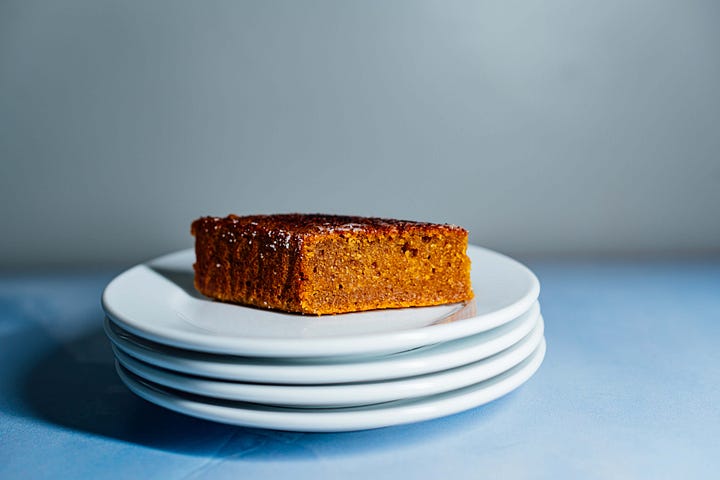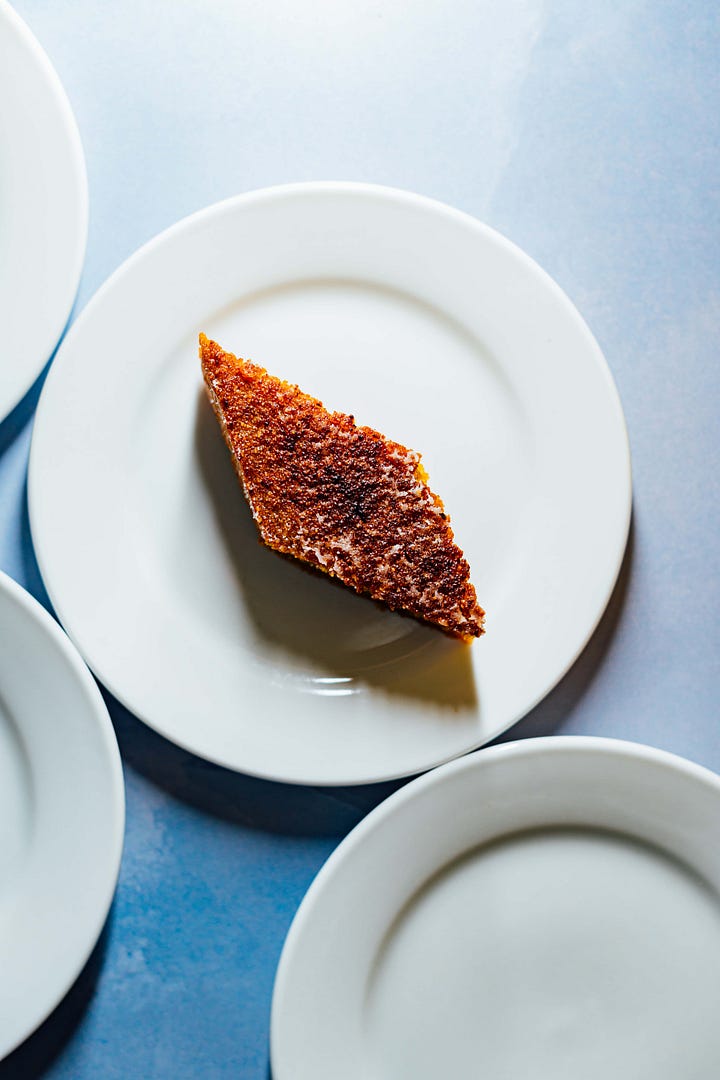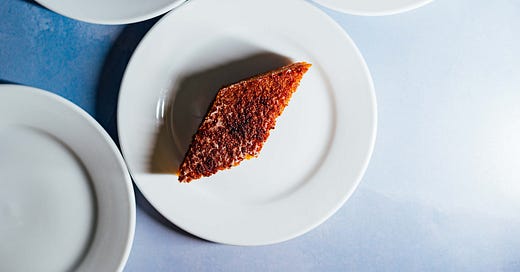🧪 Why Your Silicone Spatula Stinks (and What to Do About It)
Plus: A Caramel-Crusted Burmese Semolina Cake You’ll Want to Bake Right Now
Welcome to The Flavor Files! 🎉This is where my love for cooking, flavor, and food science all come together—because delicious food is even better when you understand a little of the magic behind it.
Looking for more recipes? You’ll find them all at Nik Sharma Cooks.Still need a copy of my latest cookbook, Veg-Table? You can grab it here—it’s filled with veggie-
driven inspiration. 🌱✨
You might spot a few affiliate links sprinkled throughout this newsletter; they help keep the spice—and the science—flowing.
Now, let’s dive in. 🔥
🔬 Why Does My Silicone Spatula Stink? And How to Actually Fix it
The other day, I reached for my silicone spatula, one I'd recently used to stir together a saucy pasta. The dish was long gone, but its memory lingered… in scent. I took one whiff and immediately regretted not cleaning the spatula more thoroughly. That garlicky, savory smell, which had been so inviting during dinner, was now clinging to the tool. And I was about to make a dessert.
To be clear, it's unlikely that the aroma would've actually transferred into the cake batter, but still, the smell bothered me. It always has. As much as I love silicone tools (they're gentle on my cast iron, flexible, and nearly indestructible), they have one annoying quirk: they hold on to smells.
So, why does silicone retain odors?
Silicone is often celebrated for being chemically stable and non-reactive; it doesn't leach like plastic can, resists heat, UV, oxygen, and moisture, and it's considered food-safe and non-toxic. It also repels water, which makes it ideal for spatulas, baking mats, molds, and more.
But here's the catch: silicone is permeable to gases and fat-soluble molecules.
Structurally, silicone is a flexible polymer with tiny microscopic pores between its molecular chains. These pores are too small for water to enter quickly, but they allow volatile aromatic compounds, like garlic oil, spices, and caramelized onions, to slip right in.
When silicone is exposed to heat, its pores expand slightly, making it even easier for aroma compounds to embed themselves deeper. Once inside, they're tough to dislodge with soap and a sponge, no matter how often you run it through the dishwasher.
Over the years, I've found that the intensity of absorption doesn't always correlate with the price or brand. Even high-quality, food-grade silicone can hold on to those delicious (but unwanted) smells. It's not about poor hygiene, it's chemistry.
How to De-Stink Your Silicone Tools (and Keep Them That Way)
For Regular Silicone Tools (Not Oven-Safe)
Wash thoroughly with hot water and degreasing soap.
In a large stockpot, boil a solution of
‣ ¼ cup baking soda per 4½ cups [1 L] of water
‣ Add tools and let soak overnight (off heat).
The next day, drain, then add a 1:1 mix of white vinegar and water.
Bring to a gentle boil, then simmer for 15 minutes.
Rinse and air dry.
Why it works:
Baking soda acts as a mild abrasive and deodorizer, loosening trapped residues.
Vinegar (acetic acid) helps break down rancid fats and aromatic compounds.
And heat slightly expands the silicone, making it easier for the cleaning agents to work.
For Oven-Safe Silicone (Bakeware, Utensils)
Wash and dry the tools.
Place on a baking sheet in a preheated oven at 350°F [180°C].
Bake for 30 minutes to "outgas" the trapped odors.
Let cool completely before using or storing.
Tip: Ventilate your kitchen; those odors are released as vapor.
How to Avoid the Smell in the First Place
Use separate tools for sweet and savory cooking when possible. (I forget to do this)
Avoid storing silicone near spices or oils, as they can pick up ambient aromas.
Choose high-quality, platinum-cured silicone; it's denser and less porous than lower-grade versions.
Silicone tools may not be perfect, but their durability, versatility, and ease of use keep me reaching for them. With the right care, you can keep them clean—and stink-free—for years.
Do you have a kitchen mystery you'd like me to unpack in a future issue? Hit reply and let me know.
This week’s recipe: A caramel-crusted semolina cake scented with coconut and browned butter.
If a rice pudding and a cake had a golden, coconut-scented love child, it might be this beauty from Myanmar: Shwe Gyi Sanwin Makin; also known as Burmese Semolina Cake or simply Sanwei Makin. It’s soft, fragrant, and lush, denser than a classic Western cake, with a gently grainy texture that comes from coarse semolina (rava) and the deeply satisfying flavor of toasted coconut and jaggery. Today I’m sharing my version of this splendid cake, and I hope you’ll give it a try.


👉 Paid subscribers get the full recipe and tips.
Keep reading with a 7-day free trial
Subscribe to The Flavor Files to keep reading this post and get 7 days of free access to the full post archives.




